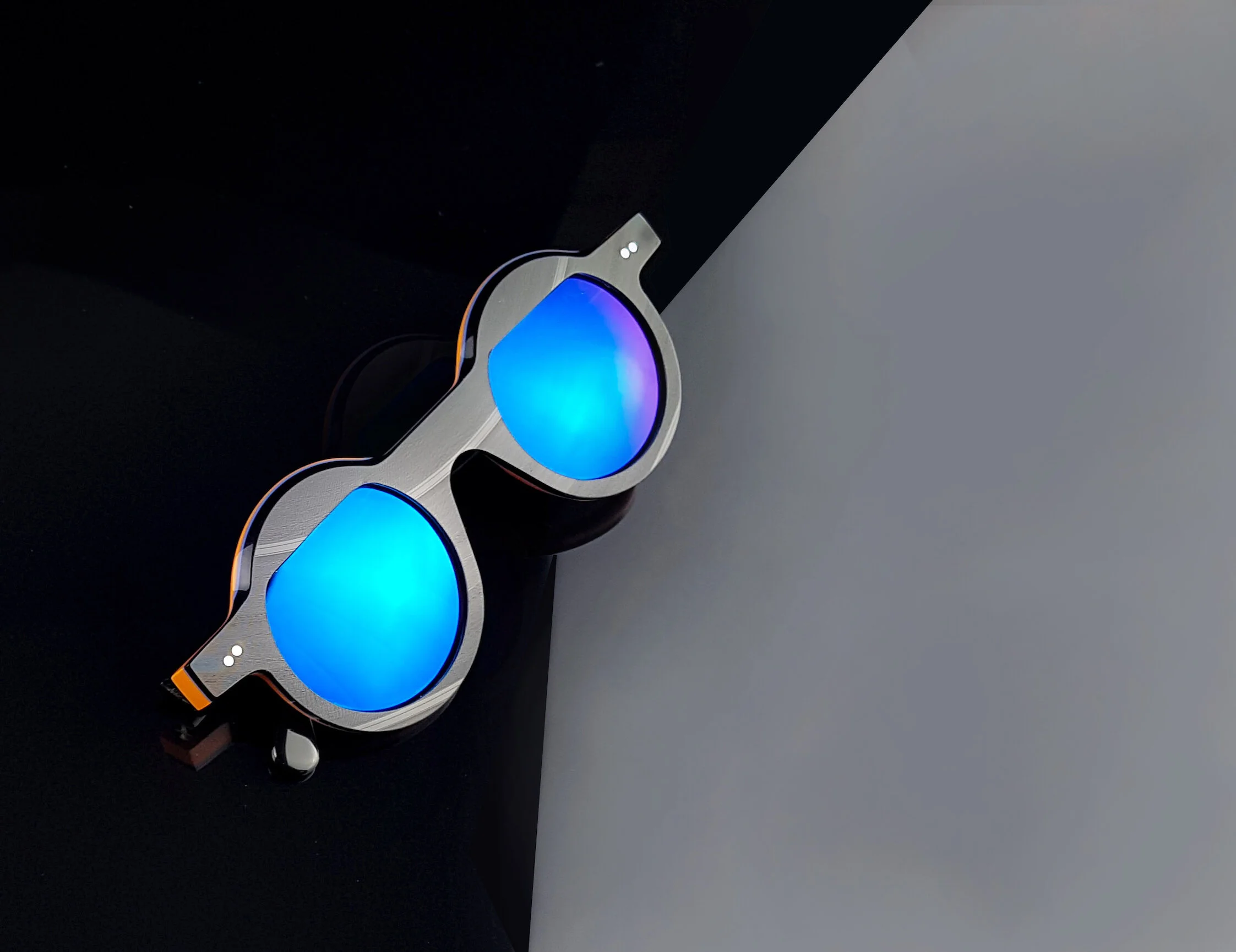BAUHAUS VINYLIZE || Eyewear Collection Celebrating 100 years of Bauhaus

To celebrate 100 years of the influential and revolutionary Bauhaus movement, Vinylize Eyewear created a limited-edition eyewear collection that embodies the essence of Bauhaus design.
A firm believer in the Bauhaus design philosophy that “Everything is design”, co-founder of Vinylize, Zack Tipton, leapt at the chance when they were invited to design a celebratory Bauhaus-inspired collection. The up-and-coming brand is known for its fine, handcrafted frames created by upcycled black vinyl in Budapest, and has made a reputation in recent years through a series of impactful collaborations with global brands.
The Bauhaus collection was designed by senior Vinylize designer Simon Hukaya who drew inspiration from the original Bauhaus design qualities including the use of strong lines, simplicity and retaining the integrity of raw materials. The bold frame is composed entirely of circles intersected by lines, and features a unisex design that can be worn by both women and men. The front of the frame is made using Vinylize’s signature black upcycled vinyl, and the warm orange on the frame interior is made from plant-based acetate. To create a comfortable piece that can be worn day-to-day, the temples are thermo-sculpted to fit ergonomically on the natural curves of the face. The Bauhaus collection is available as both glasses or sunglasses, making it a versatile styling piece for any occasion.
The Bauhaus art movement first emerged as a cutting-edge art school in Germany that operated from 1919 to 1933. The school gained popularity for its unique approach to design, and its long-lasting influence has since permeated every aspect of life, from architecture to everyday objects including furniture, clocks, and interior design. The movement is widely known to have a profound influence on modern-day architecture, art, design, and architectural education, and its philosophy has been universally adopted by renowned architects, artists, and designers to this day.
Determined to do justice to the legacy and influence of Bauhaus, the Vinylize design team looked into the deeper meanings of Bauhaus with the help of award-winning architecture historian, András Ferkai.
“We talked mostly about how most people’s understanding of Bauhaus is really rather superficial. Despite the simplicity of its fundamental principles, Bauhaus is actually a complex, shape-shifting phenomenon to understand. Historians of the movement talk about three distinct periods under different directors. Founder Walter Gropius presided over the Dessau period, which lasted until 1928. This was a highly experimental time when the school was dedicated to creating harmony between the arts and industry. Most of what we understand Bauhaus to be today, especially design products such as the Cradle magazine rack, come from this period. Then came an expressionist, slightly mystical period before the next director Hannes Meyer encouraged a trend towards solving everyday challenges. Finally, Mies van der Rohe instigated a shift towards textile, pottery and metalwork design. But, as far as I know, no Bauhaus designer ever made glasses. This is one of the reasons, for me, the Vinylize frame is so exciting. And Simon’s track record up until now demonstrates he’s more than capable of rising to the challenge of saluting such a venerable tradition.”
Much of the Bauhaus movement’s impact came from its use of colour and shape. Resulting output tends to use mainly red, blue and yellow, combined with simple geometric shapes in a distinct and deliberate fashion with a universal appeal. The use of bold and contrasting colours commonly seen in the Bauhaus design is apparent on the Bauhaus sunglasses, which boast an orange/yellow inner frame and eye-catching blue polarized lenses.
“The fact that no Bauhaus designer ever made frames was liberating for me, although whatever I designed needed to look ‘Bauhausy’, this was far from being a straitjacket. I started from the circle, triangle and square shapes and blue, red and yellow colours that set the Bauhaus ground rules. Johannes Itten’s color wheel theory also influenced me. The colour palette for the Vinylize Bauhaus follows these principles to achieve a contemporary effect that looks perfect on men or women. I also looked at Bauhaus architecture and how they worked with shape and mass. Our Bauhaus frames use the circle expressively while nodding to the eyewear style of the 1920s and 30s. The lines in the frame design and vinyl itself give order and coherency”
Following another great design mantra from Bauhaus design, “form follows function”, the Vinylize design team emphasizes the wearability of the final product. “There’s no point designing great-looking glasses if they’re uncomfortable,” says Simon.
Founder of Vinylize Zack Tipton adds, “We loved the challenge of saluting the most influential design movement of the last 100 years. Vinylize aficionados around the world are usually highly design-literate, with many architects among them and these are the people we knew we had to delight. It’s deeply satisfying for us to create eyewear that is already being snapped up by our most discerning customers. If you’re an architect or have one in your life, I’m happy to say the Bauhaus would make the perfect gift. And we really have made only 100.”
To learn more about the Bauhaus collection or to snatch the last few remaining frames, visit here.
Pictures Courtesy of Vinylize









